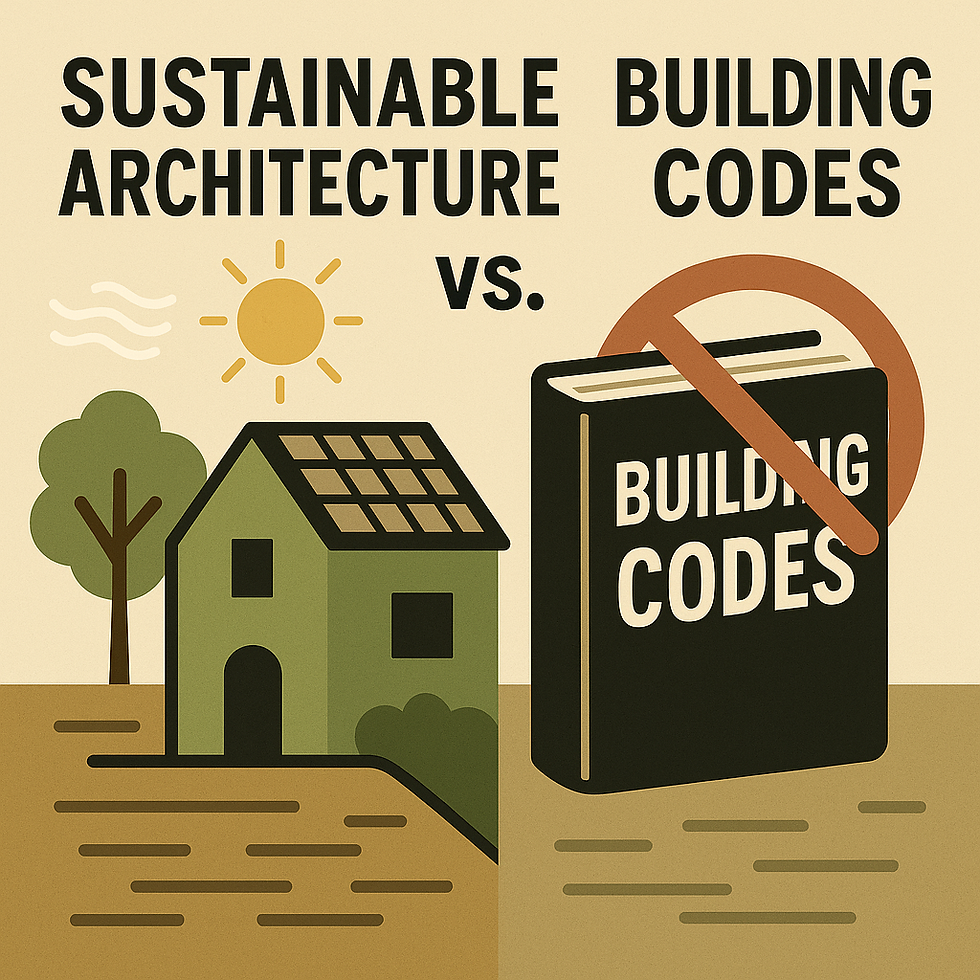Rethinking Building Codes for Sustainability
- Hoseong Lee
- Jul 17
- 2 min read
With growing ecological concerns, architects are seizing Design Challenge One: the impact of the milieu on buildings. Many works of green architecture use passive heating, natural ventilation, and solar panels to make energy use wiser and less costly—or recycled materials, in the long tradition of salvage and thrift. But though these environmentally friendly features are designed to help both nature and people, they sometimes clash with current building codes. Many such codes, originally written to protect public safety, are outdated and not flexible enough to accommodate more recent design methods, which may be more sustainable.

For green buildings, one common problem is a standoff between traditional zoning restrictions and the unconventional forms they take. Architects often shape or orient their buildings to save energy, basing decisions on sunlight, wind direction, and the surrounding terrain. But these decisions can contradict rules on building height, window size, or how far—a structure must be set back from the property line, according to local governments. What makes sense environmentally may not quite fit within a legal framework.
Materials that aren't listed in existing codes also pose challenges. Steel, concrete, and brick may all be familiar, documented materials; more sustainable options like rammed earth, straw bale, and bamboo are not officially approved—even if they work well. Architects who want to use them must take extra steps to prove they’re safe, or accept the added costs and delays. Rainwater harvesting, composting toilets, and other systems common in green buildings often don’t fit neatly into existing sanitary or plumbing codes. And renewable energy systems—like rooftop solar panels or ground-source heat pumps—can be restricted by local regulations.

These often require special permits that are difficult to obtain and inconsistently enforced.
To support sustainable building, codes need to be revised more often and with closer attention to the specific conditions they’re meant to address, rather than strictly following rigid rules. Instead of focusing only on prescriptive regulations, officials should consider performance-based codes—ones that evaluate how a building functions: how much energy it uses, how well it insulates, how it handles waste—not just how it looks. The more independent thinking the law allows architects, the better outcomes we’ll see in both safety and efficiency.
At the same time, cities and governments can make sustainable construction easier by fast-tracking approvals for projects that meet recognized environmental standards. They should also offer clear guidance to both design professionals and code officials—because everyone needs to understand what truly makes a building sustainable.

Comments